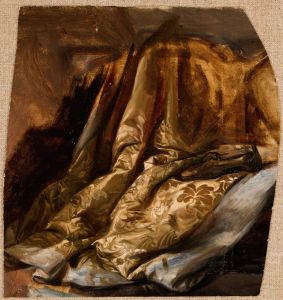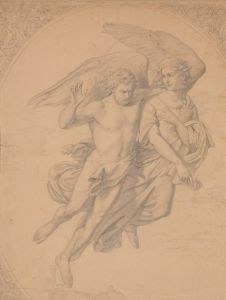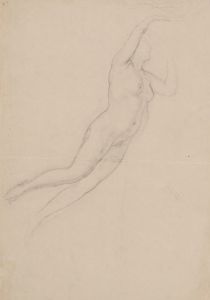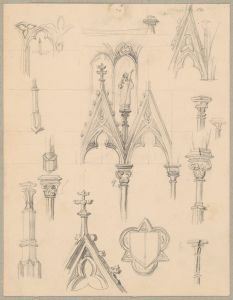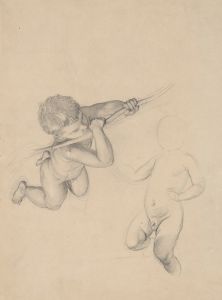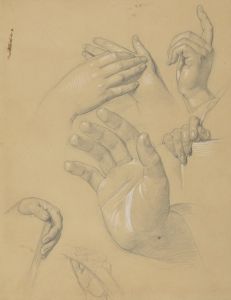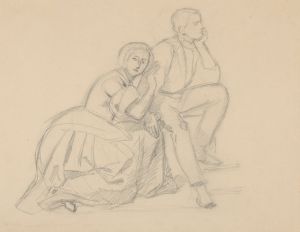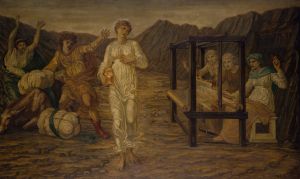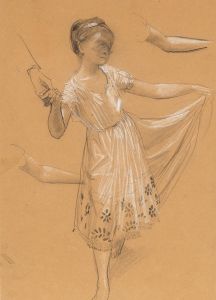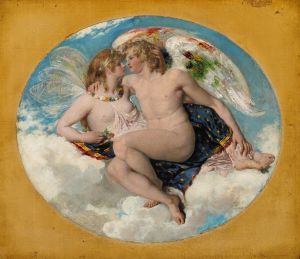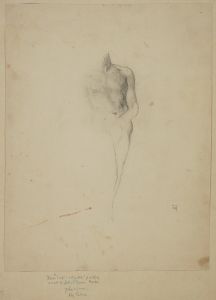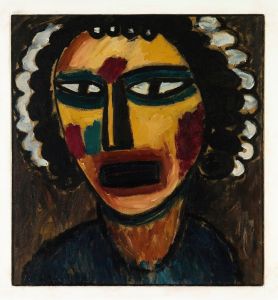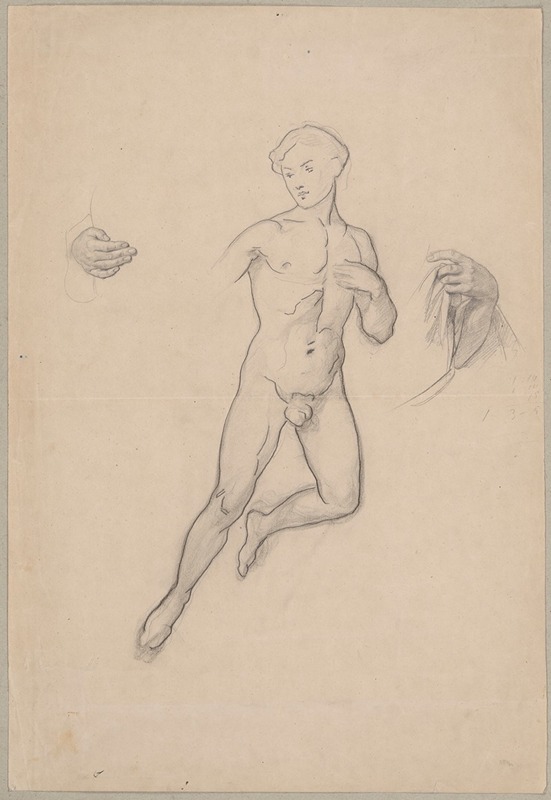
Szkic postaci Amora do plafonu ‘Pochód weselny Amora i Psyche’
A hand-painted replica of Józef Simmler’s masterpiece Szkic postaci Amora do plafonu ‘Pochód weselny Amora i Psyche’, meticulously crafted by professional artists to capture the true essence of the original. Each piece is created with museum-quality canvas and rare mineral pigments, carefully painted by experienced artists with delicate brushstrokes and rich, layered colors to perfectly recreate the texture of the original artwork. Unlike machine-printed reproductions, this hand-painted version brings the painting to life, infused with the artist’s emotions and skill in every stroke. Whether for personal collection or home decoration, it instantly elevates the artistic atmosphere of any space.
Józef Simmler was a notable Polish painter of the 19th century, renowned for his contributions to the Romantic movement in Poland. One of his works, "Szkic postaci Amora do plafonu ‘Pochód weselny Amora i Psyche’," translates to "Sketch of the Figure of Cupid for the Ceiling ‘Wedding Procession of Cupid and Psyche’." This piece is a preparatory sketch, which indicates that it was part of the preliminary work for a larger composition intended for a ceiling decoration.
Simmler was born in 1823 in Warsaw, Poland, and he studied art in various European cities, including Dresden, Munich, and Paris, which were prominent centers for art education during that period. His exposure to different art styles and techniques across Europe significantly influenced his artistic development. Simmler is best known for his historical and genre paintings, which often depicted scenes from Polish history and literature, infused with Romantic ideals.
The sketch of Cupid for the ceiling decoration reflects Simmler's skill in capturing the human form and his attention to detail. Cupid, often depicted as a cherubic figure in art, is a symbol of love and desire in classical mythology. The choice of Cupid and Psyche as subjects is rooted in the popular myth from Roman mythology, which tells the story of the love between Cupid, the god of love, and Psyche, a mortal woman. This myth has been a rich source of inspiration for artists throughout history, symbolizing the union of divine love and human soul.
Simmler’s work on the "Wedding Procession of Cupid and Psyche" would have been part of a larger decorative scheme, likely intended for a grand interior space. Ceiling paintings, or plafonds, were a popular form of artistic expression in the 19th century, often used to embellish the interiors of palaces, public buildings, and private residences. These works required a high level of skill and planning, as they needed to be coherent with the architectural elements of the space.
Unfortunately, there is limited information available about the final execution or the current whereabouts of the complete ceiling painting for which this sketch was made. It is not uncommon for preparatory sketches to survive while the larger works they were intended for do not, due to various reasons such as changes in architectural tastes, renovations, or the destruction of buildings.
Simmler passed away in 1868, but his works continue to be appreciated for their technical proficiency and their embodiment of the Romantic spirit. His contributions to Polish art are significant, and his works are held in various collections, including the National Museum in Warsaw. The sketch of Cupid remains a testament to his artistic vision and his ability to convey complex themes through the depiction of mythological subjects.






